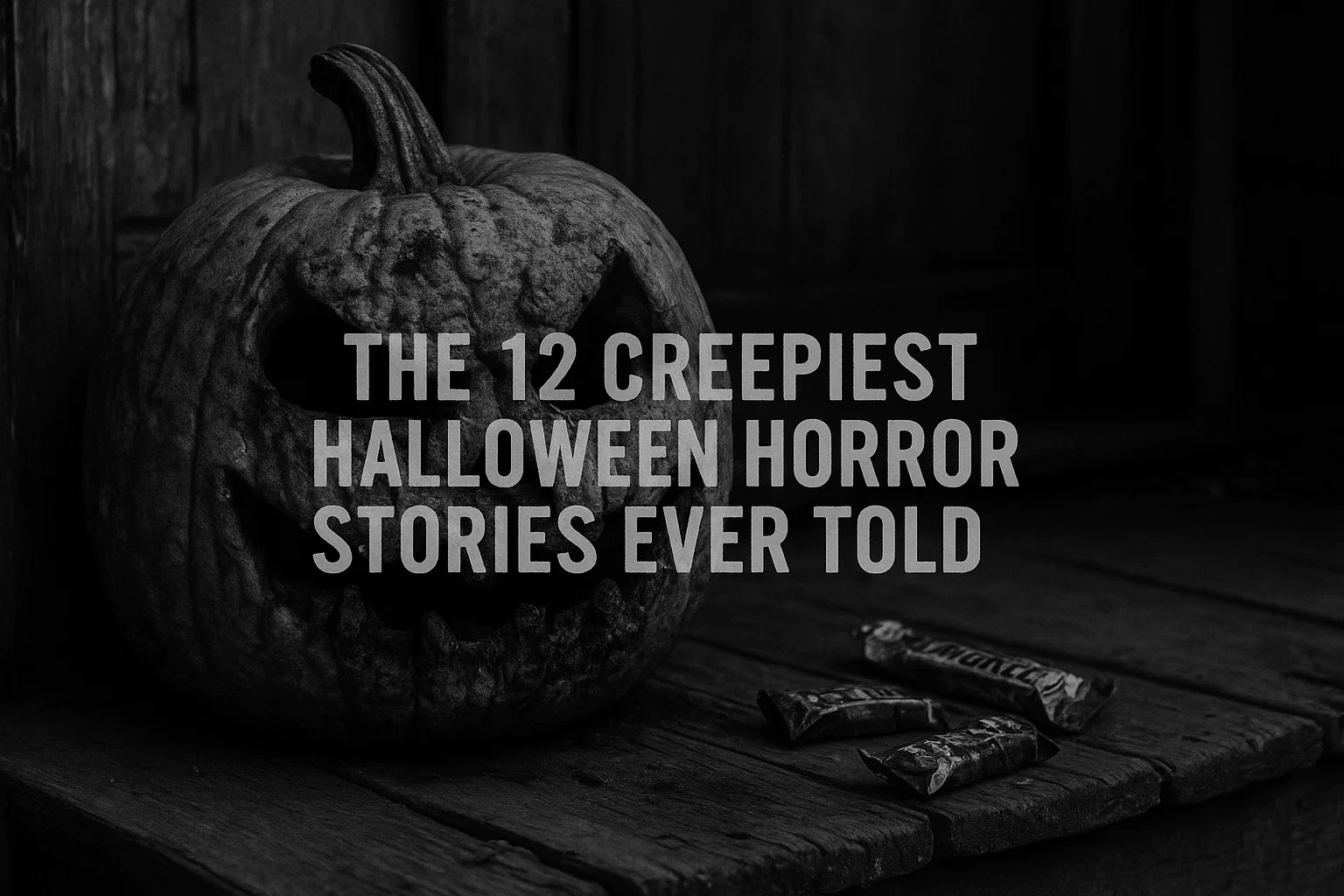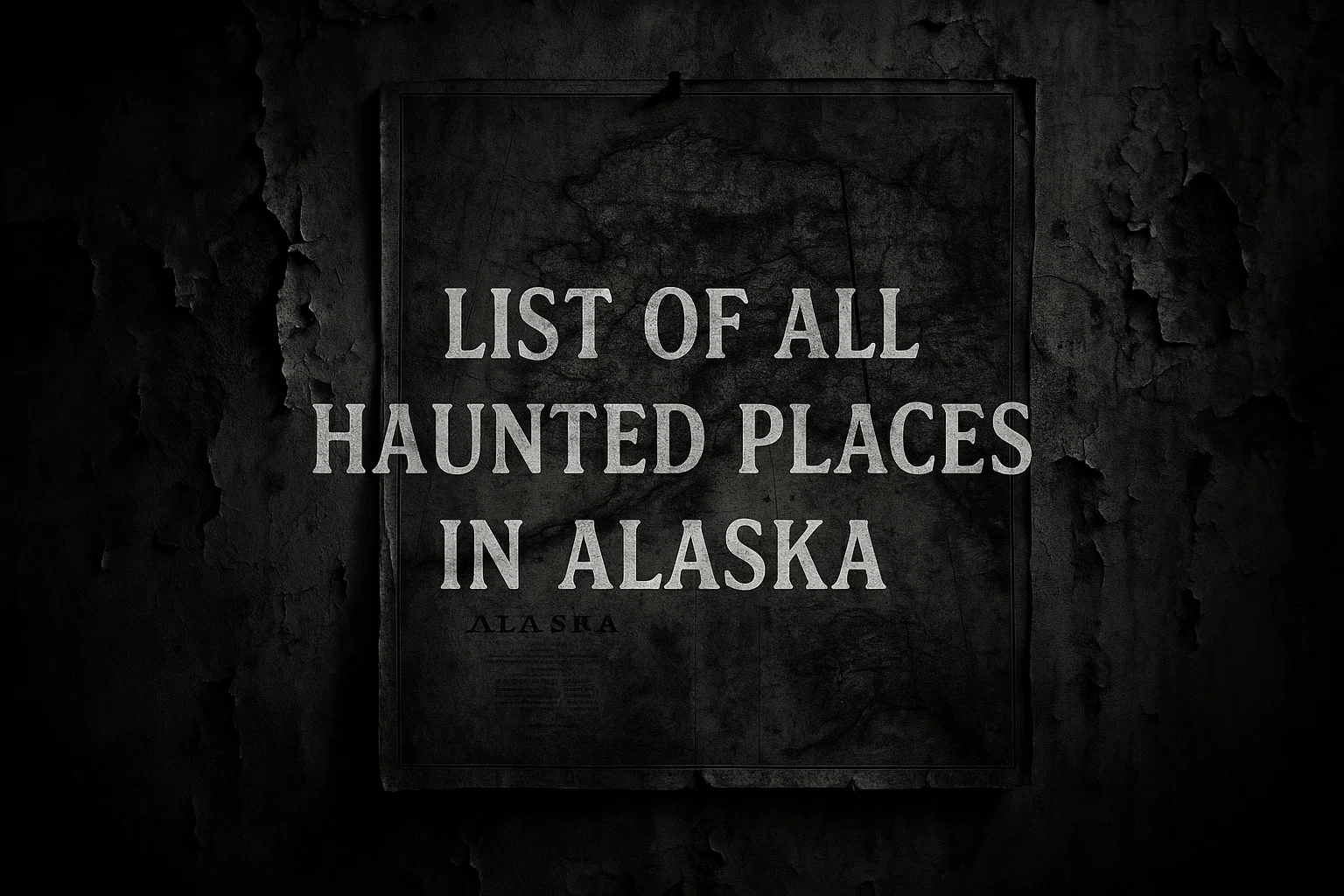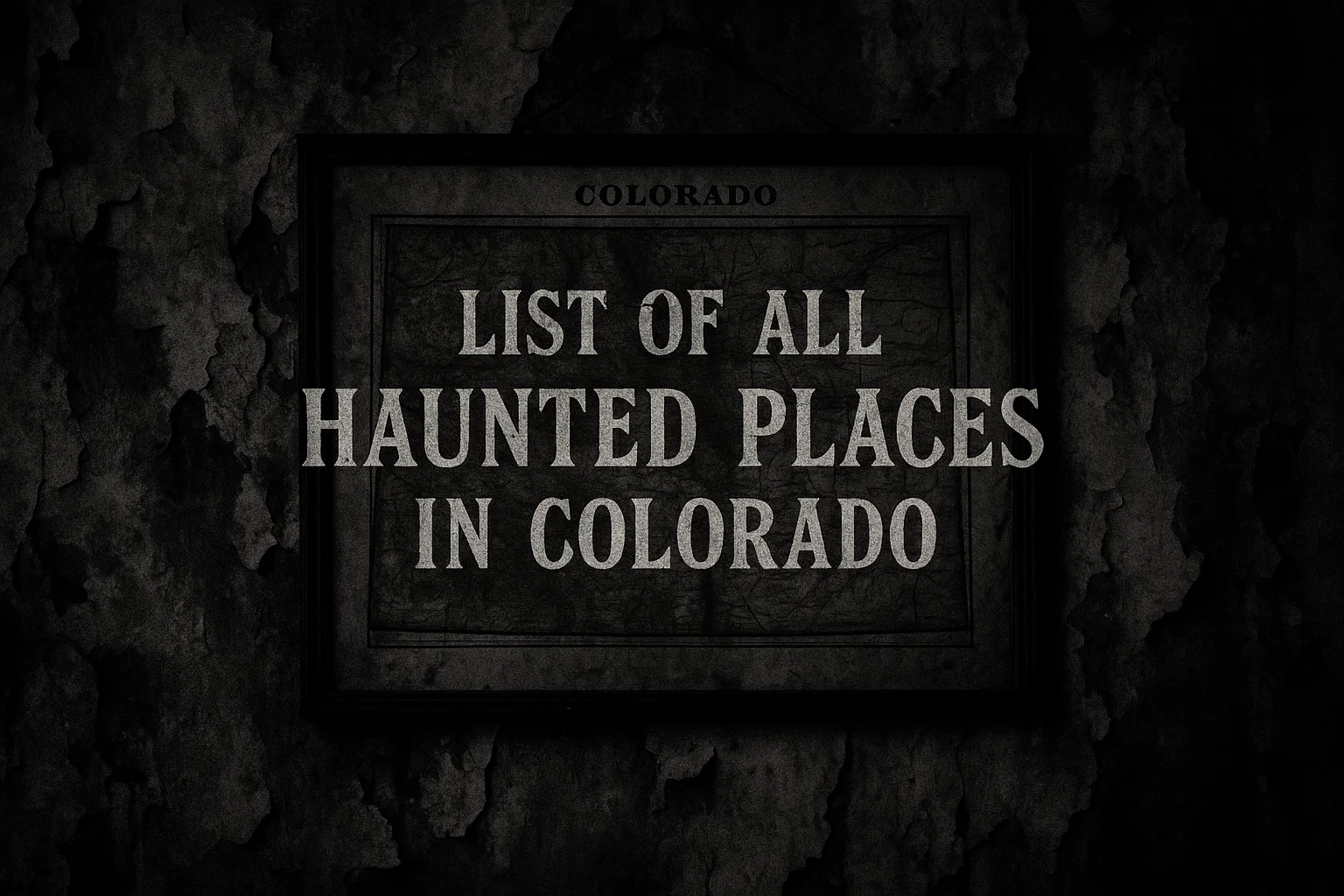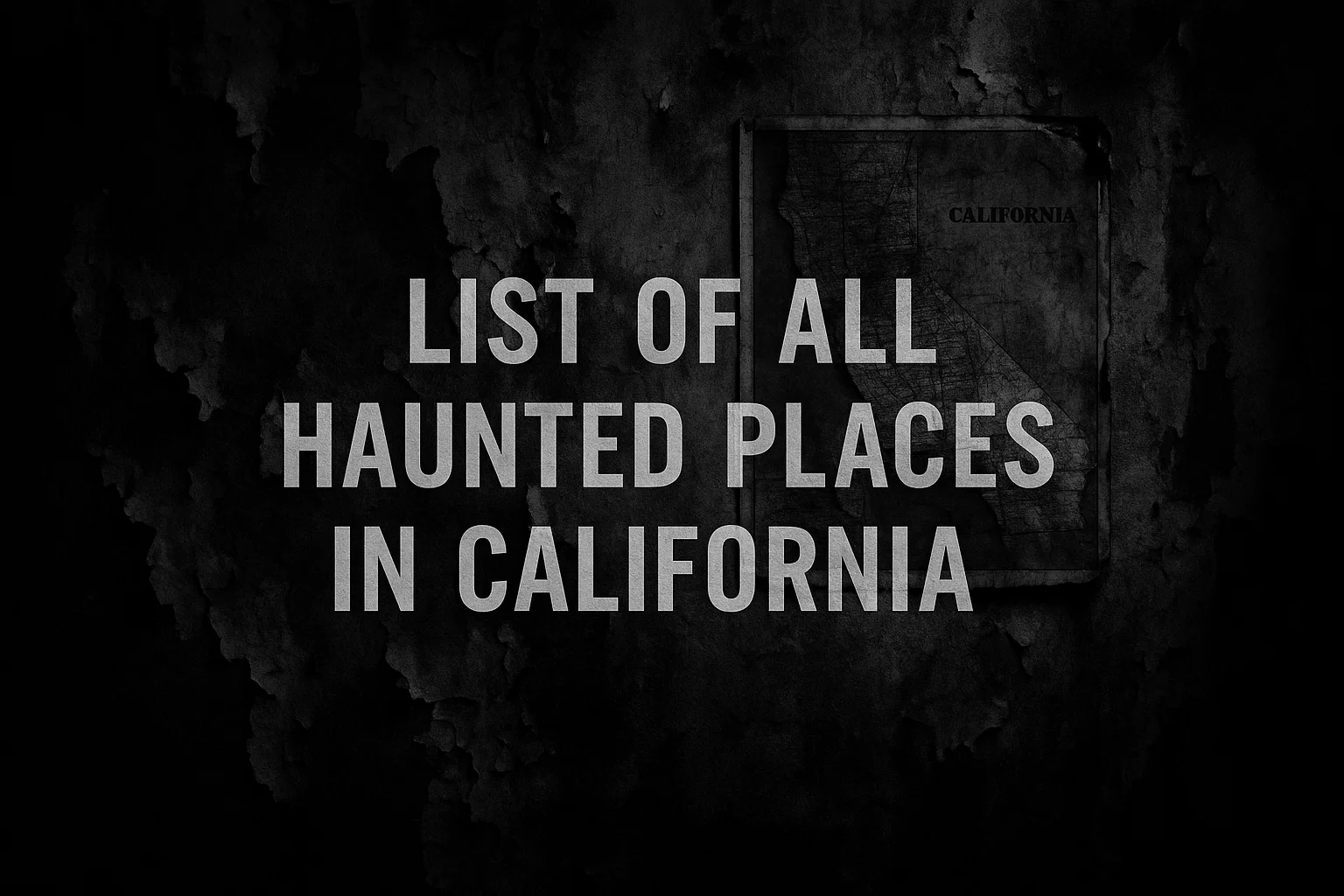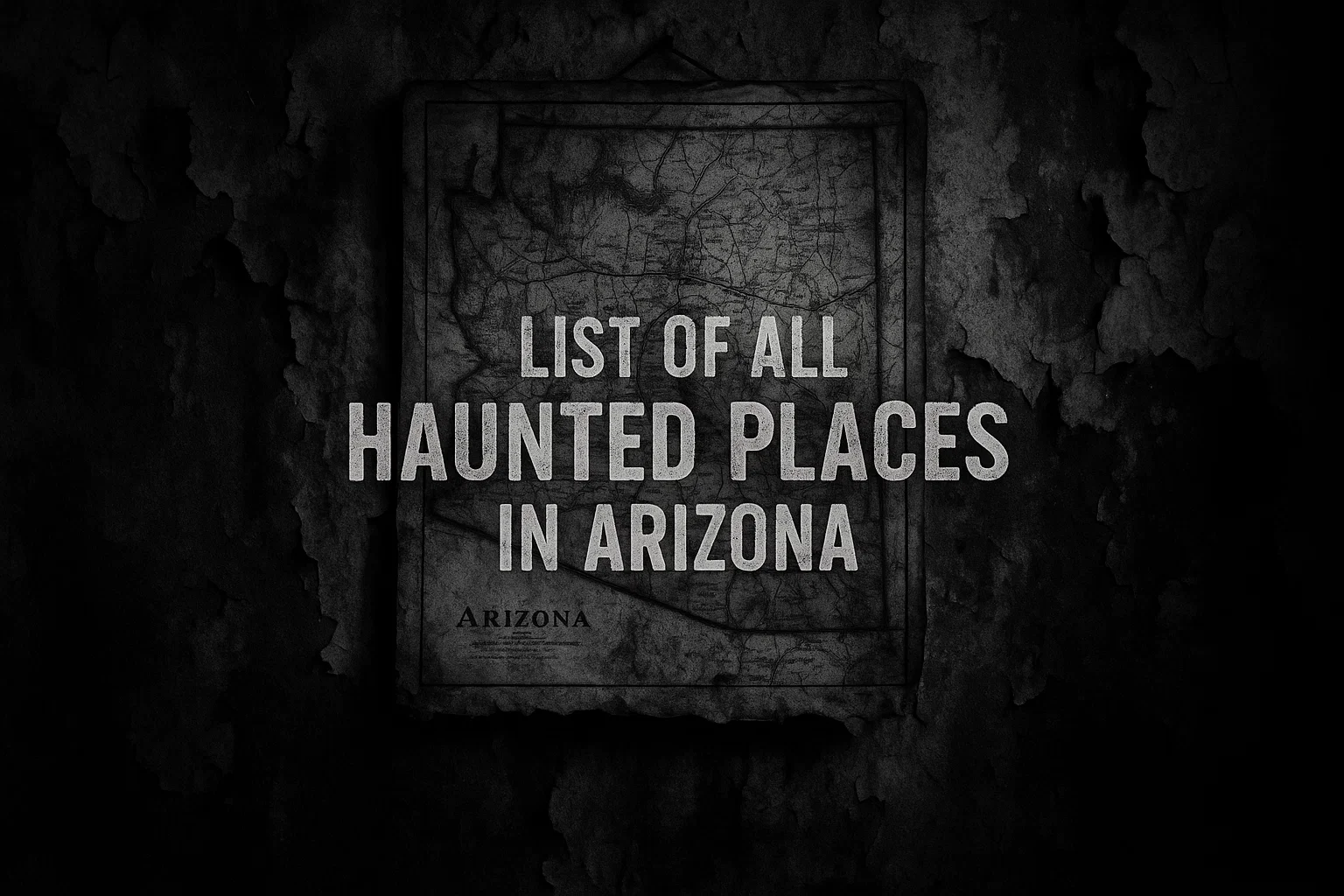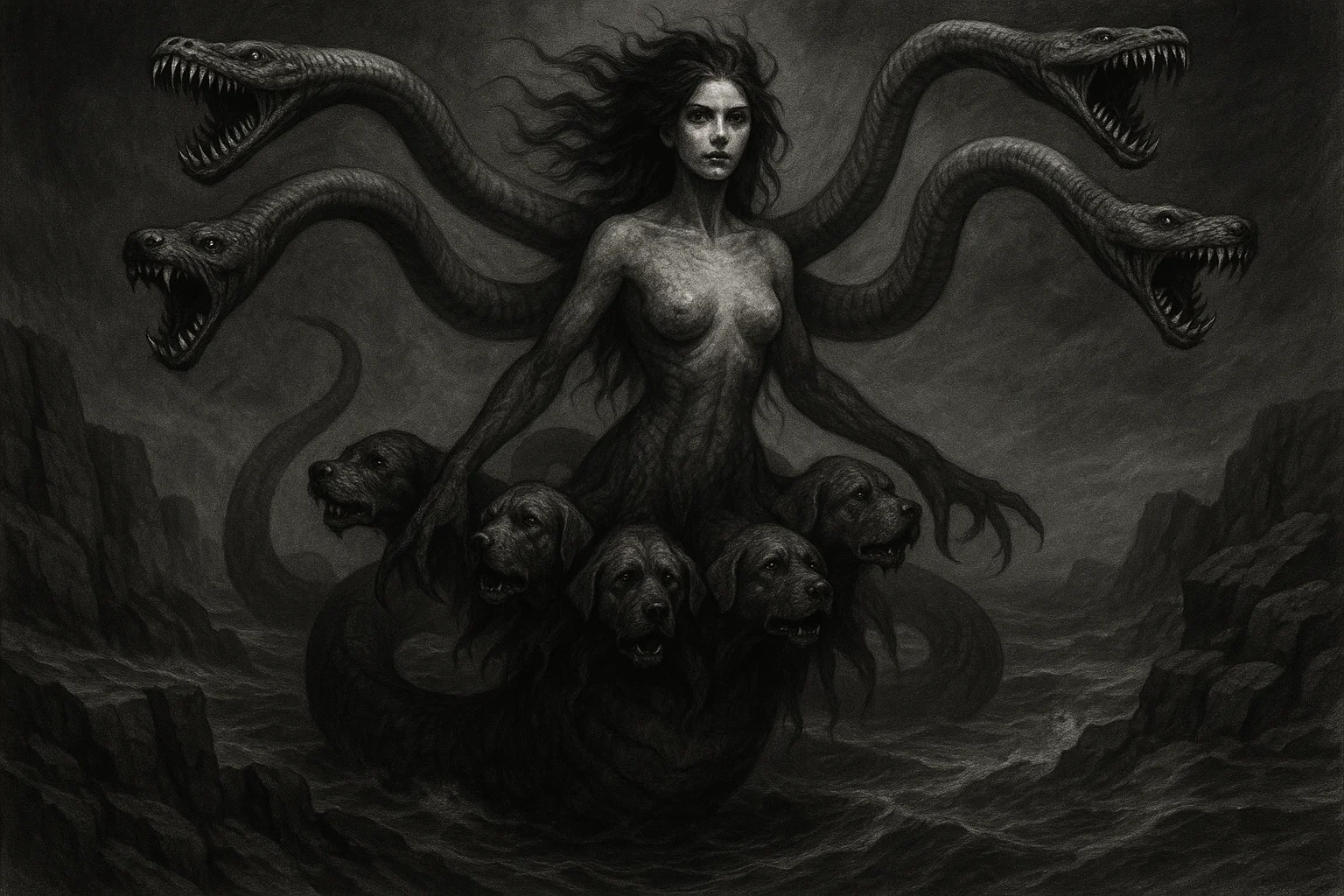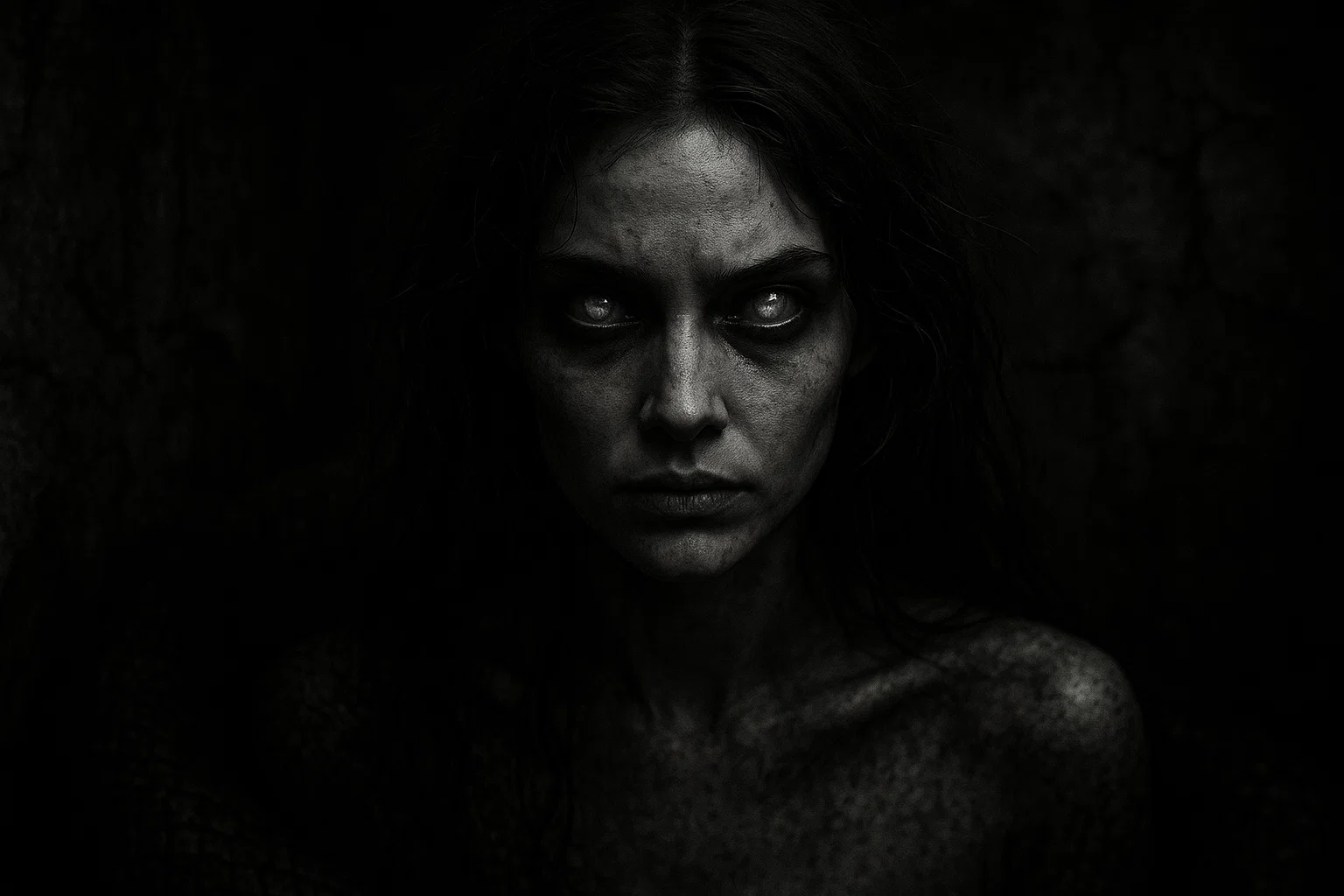This collection of 12 Halloween horror stories captures the unsettling essence of the season, where ordinary moments—trick-or-treating, childhood friendships, and festive decorations—twist into encounters with the unknown.
Halloween, a night when the barrier between the living and the dead is at its most permeable, gives birth to creepy, terrifying stories that linger in the shadows of our imagination. From a child drawn into a chilling pact in a seemingly innocent neighborhood to a teenager confronting distorted reflections of mortality in a haunted maze, each Halloween horror story probes the unsettling question: are these tales merely the fruit of creative minds, or do they hint at something more sinister rooted in reality?
Summary
The Smiling Man
It was the night before Halloween in Maple Grove, a quiet suburb of Seattle. The whole area was the epitome of suburban normalcy—neatly trimmed lawns, white picket fences, porch lights twinkling like fireflies against the darkness.
Tonight, though, a weird quietness cloaked the streets, a silence so profound it seemed to press against the ears, broken only by the occasional whisper of leaves skittering across pavement. Streetlights wavered, their amber glow casting long, warped shadows that seemed to shift when unobserved. The air carried the scent of moist soil and the faint, sharp sting of a far-off bonfire, a hint that Halloween was drawing near.
Mark Hensley, thirty-two, wandered these streets alone, his sneakers scraping the sidewalk in a cadence as familiar as his pulse. A graphic designer by profession, Mark stuck to his routine; his evening walks were a way to escape the frenzy of deadlines and client demands.
He was unremarkable in appearance—average height, brown hair receding slightly, glasses constantly slipping down his nose.
Maple Grove was his haven, a gated enclave where children left bikes on driveways and neighbors greeted each other from their porches. He’d lived here for five years, long enough to memorize every sidewalk crack, every dog that yapped at passing shadows.
Yet tonight, the neighborhood felt off, like a stage deserted by its performers. The houses loomed dark, their windows blank, their porches bare except for rocking chairs that creaked in a breeze Mark couldn’t sense.
He pulled his jacket tighter, the cold seeping into his bones, and hastened his steps. “I’m just exhausted,” he mumbled. “Way too many late nights.”
But the excuse felt hollow. His skin prickled, the hairs on his neck rising as if aware of something he wasn’t.
Passing the old oak at Elm Street’s corner, its twisted branches clawing at the sky, he heard a noise—a faint rustle, like cloth brushing against bark.
He stopped, his gaze sweeping the darkness. A stray cat bolted across the road, its eyes glinting green before it vanished into a shrub.
Mark chuckled. “Pull yourself together, Hensley. This isn’t one of the classic Halloween horror stories.”
He recalled a night from his childhood in Tacoma, when he woke to the sound of footsteps in the corridor, certain an intruder was in the house. He’d cowered under his blankets, heart racing, until morning proved him wrong. Now, that same dread knotted his stomach, irrational yet inescapable.
The streetlights flickered again, plunging the block into brief darkness. When they hummed back to life, Mark’s shadow stretched long and lean, as if it belonged to another. He walked faster, his sneakers slapping the pavement, his eyes flitting to every alley, every space between houses.
The silence was a burden, weighing heavily, and he couldn’t shake the sense that he was being observed—not by a person, but by the night itself, its gaze concealed in the shadows.
Mark was halfway down Cedar Lane, a narrow road flanked by neatly trimmed hedges, when he spotted him. A figure, perhaps a hundred feet away, stood beneath a flickering streetlight, his outline stark against the halo of light.
Read the full “The Smiling Man” story here: The Smiling Man | Halloween Horror Story
Everyone Is Afraid of Clowns
I swear this is not just another Halloween horror story. The story is true, and it happened to me, my brother, and my friends.
We lived in a small neighborhood where all the streets ended in a semicircular park. Beyond the park lay a stretch of woods and a railroad track.
When we were kids, we played in the front part of those woods. We never ventured too deep. That area was our playground for years, a picturesque and well-lit wooded spot where we never had any trouble or fright.
On October 30, 1994, my brother Jimmy, my best friend Sarah, and Jimmy’s friend Ian were building a dam in the small creek that flowed through the park and into the woods. The boys decided to head to Ian’s house for snacks, while Sarah and I stayed behind to finish our “camp” area.
As we hauled rocks around, a strange sensation washed over me, a nagging feeling that someone was watching us. I brushed it off, thinking the boys were trying to spook us, and kept working.
Sarah and I carried some large rocks back to the creek and set them down at the dam. That uneasy feeling hit me again, and as I straightened up, I noticed something about thirty feet away, directly ahead. It was obscured by a bush, but I could make out a pattern of red and blue.
I knew the boys weren’t wearing anything like that, so I focused, trying to figure out what I was seeing. As my eyes traced up the bush, I realized it was a clown. My heart started racing. The clown locked eyes with me, wearing a red-and-blue hat with a matching jumpsuit in the reverse pattern.
I grabbed Sarah’s shirt, yanking her upright, and she spotted him immediately. His face was fully painted, his smile wide, and he held a large knife in his hand.
Read the full “Everyone Is Afraid of Clowns” story here: Everyone Is Afraid of Clowns | Halloween Horror Story
My Parents Vanish Every Halloween
I don’t mean they’d slip out for a party or an evening away. No, they’d disappear—gone without a trace as dusk settled, leaving me alone in the house. I’d search, call their names, but they were simply not there, as if they’d never been. We never spoke of it.
By morning, they’d return, acting as though nothing was amiss, as if it was just another night. But it wasn’t. I knew it. I learned that the hard way.
It began when I was six. That first Halloween is engraved in my memory. Dressed as a witch, I was eager for trick-or-treating. But as the sun sank below the horizon, the house felt strange—cold, silent, unnaturally still. I raced through the halls, shouting for my mom and dad, but no one replied.
Panic gripped me. I thought they might be hiding, pulling some sort of Halloween prank. They loved Halloween horror stories, so I thought they were playing some kind of tricks on me. But after what seemed like hours of searching, I knew they were gone. The front door was locked, the windows sealed, and I was utterly alone.
That’s when I discovered the first note. It was on the kitchen table, written in my mom’s familiar script. It read:
Rule 1: “Stay in your room. Do not leave until dawn. Ignore whatever you hear.”
I didn’t understand. Scared and confused, I didn’t want to stay in my room; I wanted my parents. But something about the note compelled me to obey. I grabbed a flashlight and a pillow, locked my bedroom door, and burrowed under the blankets. I wondered if it was some odd game. I wasn’t sure.
Sleep eluded me that night. The house creaked and groaned, louder than usual. Strange sounds filled the air—soft scratches at my door, footsteps in the corridor, whispers too faint to decipher. I told myself it was the wind or my imagination, but deep down, I knew better. Something was in the house with me.
Morning came, and when I opened my door, my parents were back, sitting at the kitchen table, sipping coffee as if nothing had happened. I asked where they’d gone, what had occurred, but they just smiled and said I must have had a nightmare.
That was the start.
Every Halloween after, the pattern repeated. My parents would vanish before nightfall, leaving a note behind. Each year, the instructions grew more precise, more foreboding. By age eight, the notes added:
Rule 2: “Don’t peek out the windows.”
Rule 3: “Don’t answer if someone calls your name.”
And the noises—they intensified.
When I was nine, the sounds outside my room became unbearable. Loud, relentless knocking pounded on the door, not gentle but forceful. I covered my ears, shut my eyes tight, but I couldn’t block it out. Then came a voice—my mother’s, calling my name.
Read the full “My Parents Vanish Every Halloween” story here: My Parents Vanish Every Halloween | Halloween Horror Story
Halloween on Thorpe Street
We always craft the treats ourselves. Betty whips up the most delightful miniature fruit tarts, George prepares cinnamon-baked apples, and I showcase my culinary skills with my renowned caramels.
Our 55+ community draws more trick-or-treaters than the family neighborhoods nearby. The town has an unusually high rate of car accidents, so parents prefer their children to stay within the safety of our small cul-de-sac. You never know who might be out on the roads on Halloween.
The atmosphere is always vibrant. For one night, Thorpe Street glows like a festival. Playful wooden skeletons greet children at doors adorned with yarn spiderwebs—nothing too frightening, naturally. It has to feel secure.
Their joyful involvement is the heart of the event. Paper pumpkin lanterns light up porches, replacing jack-o’-lanterns that are too difficult for arthritic hands to carve.
As the sun dips below the hills, children begin to filter into the cul-de-sac, escorted by parents who stay cozy in their cars, letting their little ones dash along the sidewalks. We take pride in the fact that everything the kids see is handmade. The more effort we invest, the better the exchanges we can secure.
The instant we hear the first gentle knock, tapped by tiny hands, the performance begins.
There they are, a group of six-year-olds in costumes we sometimes can’t quite place, chanting “trick-or-treat” and holding out plastic pumpkin buckets.
Sometimes, we even like to share some of our favorite Halloween horror stories. Of course, nothing too gruesome. Just some scary stories for kids. They love them. And the happier they are, the more we can get out of the exchange.
Read the full “Halloween on Thorpe Street” story here: Halloween on Thorpe Street | Halloween Horror Story
A Halloween Horror Story
Halloween was Allison’s favorite holiday. At twenty-one, she still embraced the Halloween spirit with enthusiasm. She donned frightening costumes and visited pumpkin patches with friends. She relished the Halloween horror movie marathons that aired throughout October.
But this Halloween felt different.
Her demanding job in pharmaceuticals had led her to a small town in Pennsylvania, over two hours from her family and friends. This meant she spent most holidays and birthdays alone.
Ever the optimist, Allison resolved to make this Halloween enjoyable, even without her loved ones. These thoughts filled her mind that Halloween evening as she approached her front door.
Children in costumes shouted with glee a few houses down as neighbors distributed candy. Rushing her steps, eager to join the fun of handing out treats, Allison unlocked her door and pushed it open.
Before entering, she noticed a white envelope tucked beneath her welcome mat. Intrigued, she bent down and retrieved it.
There was no return address, only two words scrawled on the front: For Allison.
Curious about its sender, she tore open the envelope, pulled out the letter, and read:
“Dear Allison,
How are you? I hope you’re settling into your new home. I’ll keep this short, as time is limited.
Tonight, on Halloween, ensure all your doors and windows are locked by 10:00 PM. No matter what, do not open your door after 10:00 PM.
Whatever you hear, or think you hear, do NOT OPEN YOUR DOOR.
Forces beyond our understanding will stir, and you must not open the door at any cost. Please, take my warning seriously—I only want your safety.
Stay safe. Stay strong. Please do not open your door after 10:00 PM.
With love,
Your Aunt Cinthia.”
Allison read the letter again, scanning her street for any sign of a prankster. She had no time to think too much about this feeble attempt at a scare. Not only did she have no Aunt Cinthia, but the trick-or-treaters were just three houses away, and she needed to ready her candy bowl.
It was her first Halloween in this neighborhood, and she refused to be the neighbor who let the kids down. She stepped inside, her thoughts quickly consumed by Halloween excitement, trick-or-treaters, and the joy of handing out candy.
The ominous letter and its weak scare were forgotten.
By 9:15 PM, Allison’s candy bowl was nearly depleted. Despite being alone, she was having a wonderful Halloween. She darted between answering the door for trick-or-treaters, reading some great Halloween horror stories on her laptop, and watching a horror movie marathon on TV, sipping red wine.
By 9:45 PM, she decided to wrap up. No trick-or-treaters had come for nearly an hour—this was a young neighborhood, and most kids were likely in bed, buzzing from their sugar highs.
Besides, John Carpenter’s Halloween was next on TV, and she didn’t want to miss a moment.
She rose to switch off her porch lights, signaling that her supply of candy was gone.
As she approached the front door, she noticed it was 10:00 PM. The letter’s eerie warning resurfaced, but in her wine-fueled haze, she chuckled at the lame attempt to frighten her.
As her hand reached for the light switch, a knock came at the door.
Read the full “A Halloween Horror Story” here: A Halloween Horror Story
Stay Out of the Woods on Halloween
When I recall my childhood, I remember countless Halloween evenings roaming the streets I grew up on, enveloped by the cool, crisp fall air and houses adorned with extravagant decorations.
I feel fortunate; our neighbors went all out, and my parents got swept up in the friendly competition to match their efforts. I can still picture my dad’s pride in his creation from one year ago—a floating head crafted from an old CRT TV and plexiglass, outdoing the neighbors’ haunted maze a few houses down.
The entire street buzzed with the spirit of the season and ample budgets; hordes of kids would march up one side and down the other, navigating a corridor of eerie displays and creepy creatures, with candy in abundance.
The year I was finally permitted to trick-or-treat without my parents shadowing me is one I’ll never forget. I was a witch, my costume carefully hand-stitched by my devoted grandma, who let me pick the pattern at a craft store a few towns away.
Many kids chose witch costumes, but none shimmered in purple like mine, a fact that filled me with childish delight.
I carried a traditional plastic pumpkin bucket for my treats. After dinner and my mom’s safety talk, I was free to go.
I dashed onto the street, joining clusters of kids already trick-or-treating. I weaved between them and their parents, collecting candy from brimming themed bowls and cauldrons. I said my thank-yous, as I’d been taught, though perhaps a bit rushed in my excitement.
I had places to go. With the neighbors’ lavish displays, I wanted to visit every decorated house my short legs could reach. My mom had instructed me to stick to sidewalks and paths, avoid strangers, and stay on our street, far from the woods.
Simple rules for a Halloween night, but in my thrill—my first time out alone—I forgot them. When I saw classmates sneaking behind an old, uninhabited house at the end of the street, I followed.
Read the full “Stay Out of the Woods on Halloween” story here: Stay Out of the Woods on Halloween | Halloween Horror Story
My Neighbor Never Took His Halloween Decorations Down
I
He set them up like everyone else—orange lights, a skeleton on the porch, a witch dangling from a tree. But while the neighborhood moved on, he didn’t. November came, then December. Snow covered the witch’s face, and the skeleton’s jaw hung wide, as if frozen in a silent scream.
Yet they stayed up.
I asked him about it once, early on. He replied through the door, not opening it. “They’re not decorations,” he said. “They’re warnings.”
I brushed it off with a chuckle, thinking he was just odd, perhaps lonely. But I began noticing things. The jack-o’-lantern on his porch never decayed. No mold, no sagging—just that same wide grin, week after week. I swear, its expression shifted slightly, as if watching me.
One February night, I saw movement in his yard. Something tall, lanky, not human. From my window, I watched it stand beneath the streetlight, slowly tilting its head toward me.
I blinked, and it vanished. Sleep eluded me after that.
By March, his windows were covered with black trash bags. He hadn’t left the house in months. Yet every night, the decorations moved. The witch’s arms changed position. The skeleton shifted from the porch to the roof, then hung upside down from a branch, like something had snared it.
Last week, I saw him at 3:00 AM, standing in his yard. His face was ghostly, expressionless. His lips moved, but no sound reached me. Behind him, the witch’s eyes glowed, tracking me, I swear.
I called the police again. This time, they agreed to a welfare check. They knocked. No response. They forced the door open. Inside, they found the decorations.
Not Halloween props—people. Pieces of people, stitched, shaped, and wired into frames, worn like costumes, preserved. In the living room’s center, a rotted jack-o’-lantern, blackened and pulsing, like it was alive.
They never found him. Tonight, a skeleton appeared on my porch. It wasn’t there before. Its jaw is clamped shut, but I swear it’s grinning at me.
Read the full “My Neighbor Never Took His Halloween Decorations Down” story here: My Neighbor Never Took His Halloween Decorations Down
Otto
I’m writing this down to explain what happened to me when I was nine years old. I still remember every single damn detail of this Halloween horror story. Only that it wasn’t just a story. It was real. And I can’t live with what I’ve done anymore. This is my confession:
Halloween was my favorite, and I was the kind of kid who made friends effortlessly, loved chatting, and running with others until I was breathless.
That evening, I was at the small square near my house. My friends had gone home early, but I lingered. I loved that time of day, when the sky glowed orange and everything felt serene before nightfall.
I sat on a swing, watching the sunset, planning my candy-collecting route. I was eager to wear my new costume and devour every sweet I could get.
That’s when someone poked me.
It was a young boy, maybe seven. He grinned and asked if I could push him on the swing. I agreed, naturally—at that age, I’d befriend anyone.
His name was Otto.
He seemed like a typical kid, full of cheer and energy, just like most children. He wore a slightly tattered and worn pirate costume. I found it odd but didn’t care. At that age, it didn’t matter.
We chatted for a while. He talked about his pirate outfit, and I shared about the costume I’d wear later for trick-or-treating. We made a bet to see who could collect the most candy on Halloween. Making friends was easy then—you’d exchange names and instantly become best buddies.
Time slipped away quickly. Before I knew it, the orange sky had turned deep blue. I kept pushing Otto on the swing, laughing as we tried to gain enough speed to soar.
Then a group of kids arrived, wanting the swing. They told me to get off, but I said Otto and I were still playing.
Their reaction was strange. They stared, puzzled, as if my words made no sense. I didn’t get it, not then.
But Otto asked me to stop. He hopped off the swing, smiled, and suggested we go elsewhere.
“It’s getting dark,” he said.
I told him I needed to go home to put on my costume. He seemed thrilled and said he wanted to see it. I didn’t think much of it. Kids don’t overthink; things just happen, and we go along with them.
We walked to my house together. The streets buzzed with kids in vibrant costumes and plastic masks, running everywhere. Orange and purple lights flickered in windows, and “trick or treat!” echoed, mixed with laughter and hurried steps.
Otto and I, now feeling like lifelong friends, watched it all, excited for the night ahead.
At my house, I told him to start trick-or-treating at nearby houses while I showered and changed. He smiled, nodded, and waited as I went inside.
The rich, sweet scent of caramel greeted me. My mom always made caramel apples this time of year. She appeared from the kitchen, a dish towel over her shoulder, cheeks flushed from the stove’s heat.
“Oh, before I forget,” she said, gesturing to a corner, “I’ve gathered some old stuff to donate. Check it later and see if you want anything.”
I nodded, more focused on the caramel apples, but before heading upstairs, I glanced at the cardboard box. It was a large supermarket box, stuffed with old toys—action figures missing limbs, scratched toy cars, and clothes I barely remembered.
I rummaged through the top, just to say I’d looked.
Then I saw it.
Read the full “Otto” story here: Otto | Halloween Horror Story
The House of Mirrors
Is fifteen too old for trick-or-treating? I’ll answer my own question: yes, it’s far too old for trick-or-treating.
I should’ve realized that, but peer pressure and solitude steered me down an… unfortunate path. I was an awkward kid, painfully so. Making friends in middle and high school was a struggle, leaving me to my own devices.
I spent most of my time in the library, reading while others played or socialized outside.
I wouldn’t say I was bullied; I just isolated myself. Finding the right words or expression in social settings was always a challenge.
The realization struck in seventh grade, as I watched classmates pair up effortlessly for group projects. No one glanced my way, and I saw myself clearly: an outcast, the invisible kid.
I didn’t mind too much; my imagination kept me company with daydreams and thoughts of the future. It also left me with little to focus on besides school.
I excelled in all my classes, although only a few teachers acknowledged my efforts.
It was lonely, I admit. My daydreams often wandered to what it’d be like to have a friend—someone to share secrets and laughter with.
There’d be no story if that dream didn’t come true. It didn’t come as one friend, though. It came as two.
One day in ninth grade, during lunch in the library, two kids strolled in like they owned the place. “Dude, I gotta show you this book. Carson, you ever heard of The Black Farm?”
My ears perked up. I knew that book—Elias Witherow’s tale of a man who dies and ends up at the Black Farm, choosing between staying and feeding the pig.
“That sounds super racist, Ethan,” Carson replied.
I couldn’t help but laugh, catching their attention. They looked at me warmly, not with the usual cold stares.
“No, dude, it’s about this guy sent to a farm, and he’s gotta feed the pig. Help me find it, it’s awesome,” Ethan said.
Fatefully, I had that book in my backpack. Looking back, it feels like destiny. Trying to hide my excitement with calm precision, I fumbled to pull the book from my bag. My fingers brushed its cover, and I set it on the table.
“Hey, uh, I’ve got that book right here if you want to check it out,” I said softly.
Ethan grinned, a mix of cartoonish mischief and friendly teasing, like SpongeBob catching Squidward with a Krabby Patty.
“No way…” he said. “Lemme see that thing, man.”
He took exaggerated, comical steps toward me. I tried not to notice, but he made it impossible for me not to. If I had to compare Ethan to anyone, it’d be Jim Carrey, hands down.
He and Carson sat at my table, one on each side. “Holy crap, he’s got it. Carson, you gotta read this, man. If you’re into creepypastas, you’ll love it.”
“You guys like creepypastas?” I blurted out, stunned at how easily the words came when speaking was usually painful. “Or the Halloween horror stories?”
“Hell yeah, we do,” Carson said. “What about you?”
“Hell yeah! I love them. You know The Third Parent?”
“No freaking way, we were just talking about that,” Ethan shouted.
A chorus of “SHHH” rained down, and Ethan raised his hands in mock surrender. A warmth spread in my chest as we talked.
“Can he borrow this?” Ethan asked.
“Nah, go ahead.”
“Thanks, man. He’s been yapping about this book all day. I’ll get it back to you—wait, next week’s Halloween, right? Where do you live? We’ll drop it off, and you can come trick-or-treating with us.”
Teenagers trick-or-treating aside, would you give your address to these guys after one chat? Some might say no, others yes. I said yes.
“Hell yeah,” Carson said. “Ethan, tell him what we’re gonna do.”
“We GON’ FUCK SHIT UPPP, WE GON’ FUCK SHIT UPP,” Ethan sang.
More shushes followed.
“Right, sorry. But yeah, we’re gonna mess things up, and we hope you’re in, uh… what’s your name?”
“…Donavin.”
“Nice to meet you, Donavin.”
Ethan shook my hand wildly, then stopped, put a hand on my shoulder, and whispered, “Fuck shit up with us, Donavin,” before patting me and leaving.
Would you feel okay giving these guys your address? I didn’t see them again that day, and as I went about my routine, unease began to creep in. I’d just told two strangers where I lived. I thought I was smarter than that.
Read the full “The House of Mirrors” story here: The House of Mirrors | Halloween Horror Story
Spores
Four of us were set to go trick-or-treating: me, Joe, Gary, and Will. Will was a quiet kid, rarely speaking. We waited outside my house for him. I wore a werewolf costume, Joe was an axe murderer, and Gary was Batman.
Will had been ill the last time we spoke, so I wasn’t sure he’d show. But he did. He arrived in a simple ghost costume—a white sheet with smudged black around the eye holes and hem, like an ink cap mushroom.
“Let’s get going,” I said.
We hit the first house and got treats, but I noticed Will was unusually dirty. Had he been in a fight before joining us? Dust trailed behind him.
“What’ve you been doing?” I asked, but he just stared silently, as he often did.
We continued, visiting many houses and collecting a huge amount of candy. There were plenty of ghost costumes around. After we finished and parted ways, I noticed Will trailing me instead of heading home.
“What’s up?” I asked.
No response.
“Hey, why’re you following me?”
Silence again, just his stare through the sheet.
“Enough already. Take off that dumb costume and talk.”
I grabbed the sheet, only then realizing it wasn’t fabric. It felt like silken fungus.
“Gross, what is this?!” I yelped.
Despite my disgust, I gripped the fungal sheet harder and yanked it off.
What I saw was horrifying. Will’s face peeled off with the sheet, degloving entirely. The top of his head was missing, bits of brain exposed, mostly covered in white fungal growth.
Read the full “Spores” story here: Spores | Halloween Horror Story
The Girl in the Ghost Costume
Sally’s story is one of those Halloween horror stories people hear but never actually believe. She was only eleven when she passed away. It was a solitary Halloween night in 1995, and her parents were weary after a long day’s work. She was already dressed in her ghost costume, a budget-friendly choice typical for kids.
It was a step above a simple bedsheet, using a heavier white blanket with black sunglass lenses hot-glued over the eye holes. Beneath, she wore sneakers, jeans, and a loose shirt—no jacket, as her child’s logic assumed the blanket would keep her warm.
After waiting twenty minutes for her parents to prepare for trick-or-treating, Sally decided to venture out alone to get a head start. She roamed for hours, knocking on doors, but most went unanswered. Her neighborhood wasn’t known for enthusiastic adult participation in Halloween.
Only about one in three houses had an adult in costume handing out candy. Sally followed other kids to find the best candy spots that evening. As the wind grew stronger, the sky darkened, and people headed home, she realized she was lost.
Tailing other children had led her over three miles from home in a sprawling neighborhood where a car or bike was ideal for reaching the city. Streetlights were her only companions as she called for her parents. No cars passed, no house lights glowed, and no curtains were parted. Her cries went unanswered.
Read the full “The Girl in the Ghost Costume” story here: The Girl in the Ghost Costume | Halloween Horror Story
Everyone Dressed Up to Look Like Me for Halloween
Halloween is such a thrilling season, where every monster, creature, and twisted killer is embraced. Lots of Halloween horror stories, too. I love seeing people in their costumes—so unique and endlessly fun.
This year, though, I noticed something odd: people were dressing up as me. It caught me off guard because aren’t costumes supposed to be frightening, not mimicking someone as ordinary as me?
Seeing folks in costumes mimicking my exact appearance shook me. They were spooking neighbors while looking like me, and I never thought I was scary.
Read the full “Everyone Dressed Up to Look Like Me for Halloween” story here: Everyone Dressed Up to Look Like Me for Halloween | Halloween Horror Story

